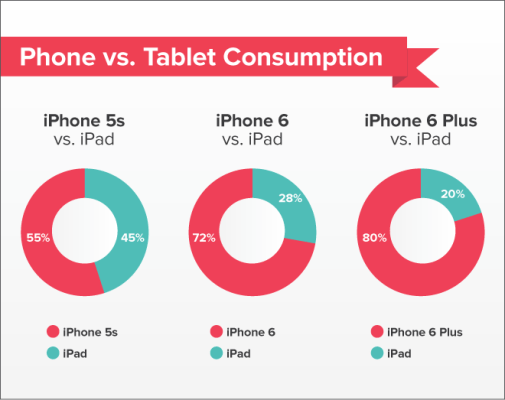When Apple unveiled the iPhone 6 and 6 Plus, it seemed likely that the larger screens on the devices would naturally lead to them assuming some of the functions of the iPad, giving users fewer reasons to turn to their tablets. Now, data from save-for-later reading and video app Pocket finds that indeed, users of Apple’s newest, larger smartphones do spend more time perusing their saved content on their iPhone 6 and 6 Plus, even when they also own and use an iPad.
The data gathered by pocket is drawn from the millions of articles, videos and other items from the web saved by users to their platform every day, and this particular study used a sample pool of over 2 million “opens” of articles and videos, comparing behavior specifically for users who upgraded from the iPhone 5 and 5s to either an iPhone 6 or 6 Plus, to see if there was any observable change in their behaviour before and after the switch.
Pocket found that among users who upgraded to iPhone 6, they now spend 72 percent of their reading time on their smartphone, vs. just 28 percent on their iPad, which compares to 55 percent of their time spend on the iPhone 5s prior to the switch. iPhone 6 Plus users leaned even more heavily on their large smartphones for reading, spending 80 percent of their time on their iPhone, and only 20 percent on the iPad.
Users with the new 6 Plus opened a whopping 65 percent more items on their device than they did on the iPhone 5/5s they upgraded from, and iPhone 6 owners opened 33 percent more content, which means that users were not only preferring their smartphones to their tablets for content consumption, they were also just more likely to consume content in general.
Pocket’s data suggests that users are eager to pick up larger-screened devices when it’s time to read or watch, but it’s also possible these numbers are skewed by the kind of early excitement that comes with any new device – people always lavish the most attention on their newest toys, after all. But this is one of the first solid data-driven indicators that new big-screened iPhones could be cannibalizing iPad sales, so it’s worth watching to see how these numbers evolve over time.
